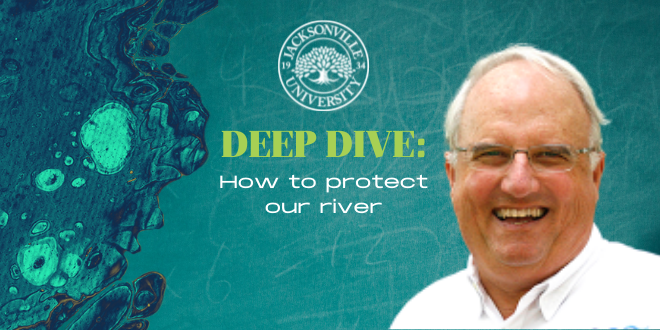With Halloween just behind us and Thanksgiving looming not too far away, it means the year is coming to an end. Every year I think about how fast it has passed. This one has been no exception, but I am ready to turn the page and move on to what will hopefully be a better next year.
As a professor, I approach years a little differently than most people because of the academic cycle. Rather than January to December, we have an August to June time frame that we also call a year but broken into semesters.
This is the time of the academic cycle when we approach the end, which means trying to cram all the material you want to include in your course, while grading all the assignments that are pouring in. It can get hectic.
This year I taught a class on the ecology of the St. Johns River. It includes upper class students who are smart, motivated and fun to teach. I occasionally hear older generations complaining about the younger folks and where we are heading. I am optimistic because I see so many of these students, and I think we have a bright future with many very capable young people waiting in the wings.
We use the State of the River Report for the Lower St. Johns Basin as our textbook, along with the book by Bill Bellville entitled “River of Lakes.” The River Report contains a vast amount of data that the students have to read, digest and present to the class in what I hope will be an understandable way. It’s a challenge and not one that most enjoy, but they still do a good job.
This year has been especially perplexing because of the many environmental problems that we have encountered.
After years of effort to improve the environment and water quality, we seem to have taken a turn for the worse. We have seen a record number of manatee deaths. As of October 22, Florida was reporting 984 manatees deaths in the state thus far this year. At this rate, we could approach 1200 deaths by year’s end. This number breaks the 2018 record of 824 reported by FWC. This is especially disturbing since many appear to be starving to death.
Equally disturbing has been the recent blue-green algae bloom of the toxic Microcystis in the St. Johns River. Sampling has revealed concentration that exceed World Health Organization standards. The Green Monster returned to the St. Johns this year with surprising intensity.
The two phenomena are related. With the algae on the surface, this shade out the submerged aquatic vegetation on which the manatees rely for food.
Algae respond to warm water and nutrients. Despite what seems like decades of trying to improve water quality and reduce the discharge of excessive nutrients into our water bodies, we seemed to have slipped backwards this year. Not sure exactly why.
The St. Johns River is a complex system. It will take more time to understand what might have triggered this bloom this year. But it is clear that it will take all of us doing our collective little bits to make a difference.
Don’t blow your leaves and grass clippings into the street, they go eventually into the river. Watch what kind and how much fertilizer you use. Those three numbers you see on a bag of fertilizer represent the primary nutrients: nitrogen, phosphorus, and potassium (potash). A bag of 10-10-10 fertilizer contains 10% nitrogen, 10% phosphate, and 10% potash. This is considered a national standard, but it is not what you need in northeast Florida. Look for that middle number to be Zero. No phosphate is needed, we get enough naturally.
And limit the amount of watering you do on your lawn. Pay attention to how much rain has occurred and adjust your sprinkler accordingly. Better yet, don’t water your lawn.
If everyone does a little bit, we can make a difference.
Glad you asked River Life
I live on a small tidal creek off of the St. Johns River that does not seem to have a name. How do you get to name a creek?
Proposals to name an unnamed natural feature like a creek are submitted to the U.S Geological Service’s Board of Geographic Names. They are responsible by law for all geographic names in the US. Their policies include restrictions on inappropriate or vulgar terms, and names of living people are not allowed.
River Life runs the first Tuesday of each month in The Times-Union. E-mail Quinton White, executive director of Jacksonville University’s Marine Science Research Institute, with questions about our waterways at qwhite@ju.edu. For more on the MSRI, visit ju.edu/msri.
 Wave Magazine Online Jacksonville University News Hub
Wave Magazine Online Jacksonville University News Hub

